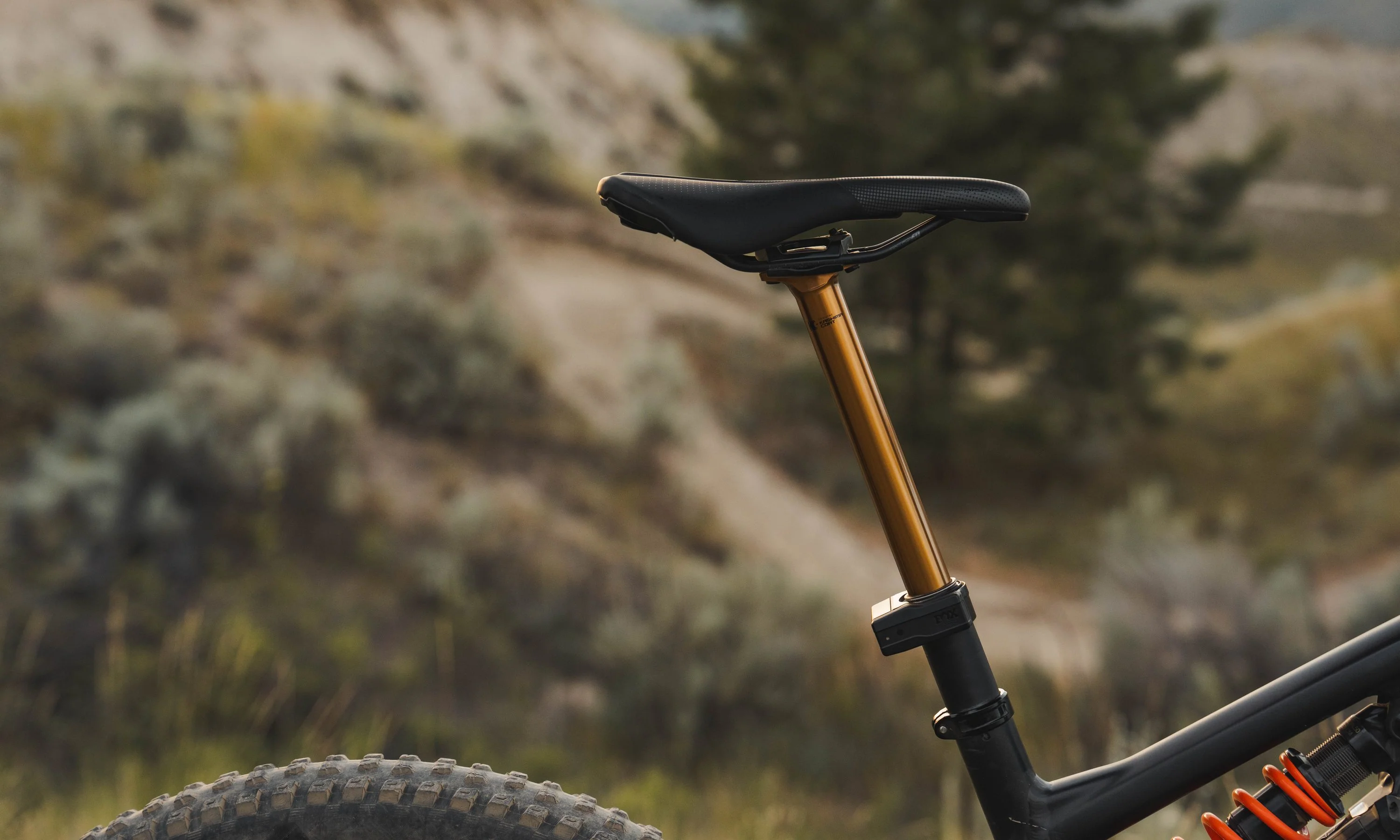The feeling of soaring through the air on your mountain bike is hard to top. Beyond the pure sensation of flying, knowing how to jump on a bike is very practical. Solid jumping skills require a lot of practice, patience, and a good helping of courage. If you want to learn and improve, find a more experienced rider who can coach you and encourage you to try things at the edge of your comfort zone. Fortunately for me, I found a world champion.
Mountain bike legend Myles Rockwell is part of an elite group. So far, only 30 people in the history of the sport have been crowned the UCI Downhill World Champion. Myles became a champion in 2000, beating downhill legends like Steve Peat and Nico Vouilloz.
Since retiring, he’s shifted his focus to the Rockwell Ridewell Foundation and 303 Dirt, where he spends his time running clinics and camps where he and a small team of pros coach young athletes.
Myles is a friend of The Pro’s Closet, and we actually feature a couple of his old race bikes in our vintage mountain bike museum series (see Myles's Cannondale Fulcrum DH and Giant ATX ONE DH). He generously offered to host a dirt jumping clinic for our employees at Valmont Bike Park, so I jumped in the intermediate-level session, excited to learn a few things from one of my personal heroes.
I began dirt jumping four years ago in an effort to improve my overall mountain biking skills. I progressed slowly, had more than a few bad crashes, and currently consider myself to be mediocre at best. The biggest challenges I face are maintaining consistency and flow through multiple jumps, and getting stiff and off-center in the air.
Here are three main takeaways I had after my coaching session with Myles:
1. Move in the air
Due to fear or inexperience, many jumpers become paralyzed and stiff midair. Stiffness means you can’t control your bike, and it leads to the horrible “dead sailor” feeling — you’re just being taken for a ride.
To break this habit, Myles suggested I start by performing a simple bar-turn in the air. It doesn’t have to be much. You can turn your handlebars to the right or left depending on your preference or foot position. Moving the bars even a tiny bit is enough.
By forcing your body and bike to move out of a perfectly aligned plane, you instantly loosen up and gain control. This prevents dead sailoring in the air and it lets you progress to jumping in a flowy, arcing pattern.
If you watch good jumpers, you’ll notice that they’re always performing some type of motion in the air. Bar-turns, whips, and table-tops aren’t just for style (though they do look good). Moving in the air is the key to relaxed, safe, and consistent jumping.
2. Don’t go straight
This is the biggest point Myles emphasized during our session and it’s the next progression from learning to move in the air. Like many inexperienced jumpers, I tend to jump in a straight line. I approach the face of the jump straight on, go straight in the air, and land straight. Myles identified this as the main source of my issues with consistency and flow.
For Myles, following a more arcing trajectory is the foundation for creating flow. He had me focus on taking off at and angle and producing left-to-right transitions from jump to landing. Essentially, we approached a series of jumps not as a straight line, but as a series of S-shaped curves where we are constantly moving from side-to-side.
This makes you naturally want to turn the bike in the air, which loosens you up and gives you more control over your flight path. You create a rhythm which leads to flow, the best part of jumping.
It makes the jumps safer, too. Jumping straight might seem safer, but its stiffness and lack of rhythm make you vulnerable to becoming a "dead sailor."
3. Keep your head forward
A couple riders struggled with nosing the front wheel down into the landing or getting bucked on take-off. These two issues are both caused by the same thing, what Myles refers to as “back-seating.”
We instinctively want to push our head and body away from things that scare us. This causes us to move ourselves farther back on our bikes (in the back seat) during jumps, ruining our weight distribution. With your weight too far back, you can’t push the front wheel back down to land smoothly.
If you’re really too far back, the lip of the jump can then kick your weight forward, or buck you. If you’re lucky, you land nose-heavy and survive. If you’re unlucky, it can send you over the bars. If you watch any mountain bike “fail” videos, this is a really common mistake.
To combat this, we have to resist our instincts and keep our heads forward. By leading with your head, your weight says centered over your bike, and you remain in control. Ideally, during a jump, your bike and body move beneath you while your head remains in the same place. You won’t get bucked, and because you’ve stayed forward, you can easily and safely nose the bike down into the landing.
Watch the video above to see us put Myles’s jumping tips into action. Hopefully, these tips can help other beginner-to-intermediate-level jumpers out there looking to progress to bigger and more technical jumps. I’m a big fan of dirt jumping, so if you want to see more content like this, let us know in the comments!

























